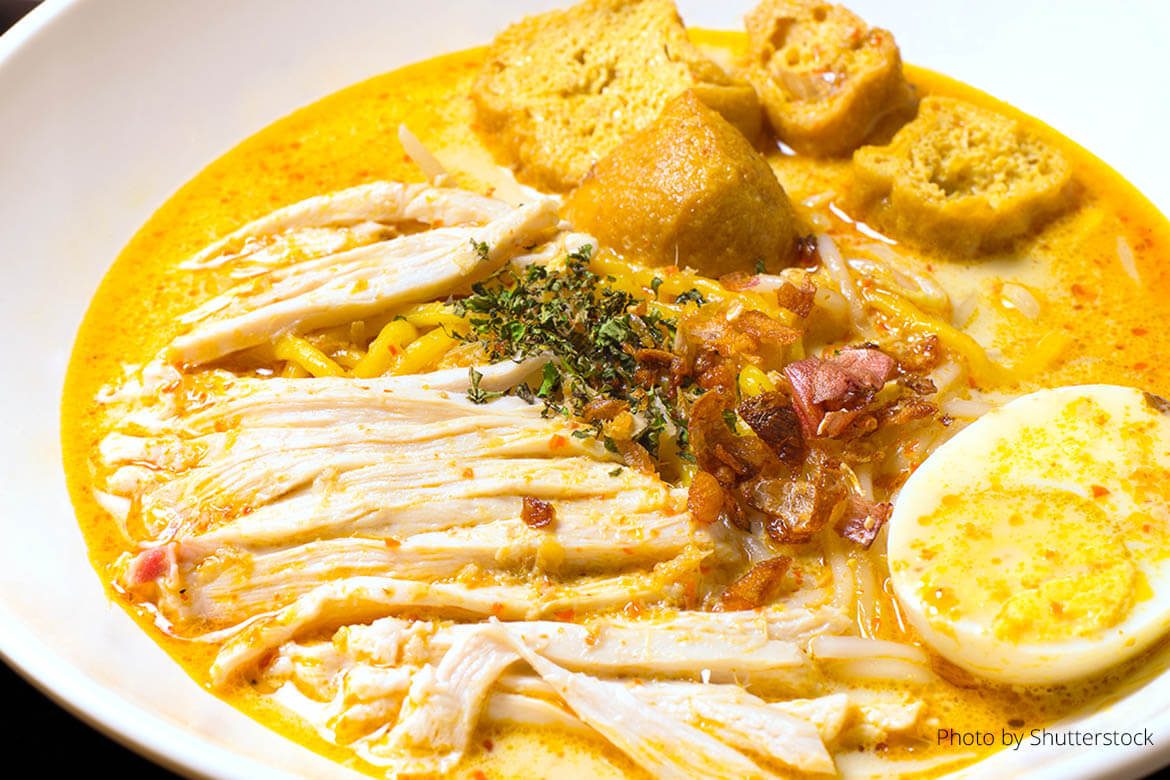Four local dishes that have their roots in the cuisine of the Chinese
Today, Indonesians of Peranakan heritage celebrate Cap Go Meh, which literally translates as “the fifteenth day of the first month of the year”. It marks the end of the Chinese New Year celebrations. Nope, I’m not going to discuss on the merits of Lontong Cap Go Meh(rice cake in coconut milk). Instead, what I would like to do is to shine a light on the extent of the Peranakan’s influence on Indonesia’s culinary world.
Sure, there are plenty of dishes that originate from the amalgamation between Chinese and Indonesian cultures. Asia-centric website Things Asian states that this combination has brought about a distinctive flavour that has added a unique feature to Indonesian cuisine. Such Chinese-Indonesian dishes vary from one area in the country to another, depending on its culture. Some have managed to be acknowledged as the iconic dish of a city or province.
Here are four very well-know treats that were created under the influence of both cultures.
Pempek
The people of Palembang love their Pempek, and so does the rest of the country. Some believe that its creation was inspired by kekkian, which is a fish-based snack that originated from South China. Another local folklore has it that it was first made by a 65-year-old Chinese man who lived nearby the Musi River in the sixteenth century. He mixed tapioca flour with spices and fish meat to create the Pempek. He would later offer it around his village by using a handcart, which was met with much fanfare. Patrons began to dub it Pempek, which is a derivative of the word apek, the Chinese slang term for “old man”. Nobody actually knows the true history behind Pempek, but either way, it is one of the best examples of an Indonesian dish that has its roots firmly entrenched in Chinese culture.
Sekoteng
Frequent visitors to Yogyakarta would be more than familiar with Sekoteng, a ginger-based beverage that is topped with peanuts, green mung beans, bread dices, and tapioca pearls. Its name was derived from nyokot weteng, which is Javanese for “a drink that bites your belly”. But despite sounding very Javanese in nature, did you know that it was concocted in China? According to National Geographic Indonesia, it was Qin Shi Huang – a king from the Qin dynasty – who first drank it between 221-206 bc. Its moniker came from the Hokkien term su ko thung, which means “soup made from four types of fruits”. Originally comprised of lotus seeds and longan, they were replaced with its current ingredients when it was transplanted to Indonesia.
Laksa
One of the most popular Peranakan dishes around, there are more than one type of Laksa that one can find in Indonesia, including Laksa Betawi, Laksa Bogor, Laksa Cibinong,Laksa Tangerang, Laksa Medan, and Laksa Palembang, among others. An article titled “How Intermarriage Created One of the World’s Most Delicious Foods” on Atlas Obscura depicts the origins behind Laksa, which traces back to the Chinese coastal settlements in Indonesia. These Chinese sailors went on to marry Indonesian women, who with their gentle hands combined chilli peppers and coconut milk with Chinese noodles soup to create Laksa. Each variation is born from adaptation to a culture specific to a geographical area. For example, Laksa Bogor uses oncom (fermented soy bean), while Laksa Tangerangcontains ebi (dried shrimp). Each variation was adapted to local cultures, as we can see from how Laksa Bogor uses oncom (fermented soy bean) while Laksa Tangerang containsebi (dried shrimp).
Bakmi
Finding whatever Bakmi dish in this country is as easy as ABC. While many countries have laid claim to be the pioneering source of the dish, National Geographic has reported that strings of 4,000-year-old noodles were found inside an overturned sealed bowl at the Lajia archaeological site in north-western China. Its name itself was taken from two Hokkien words “bah” and “mi”, which together means “meat noodles”, and they were brought to South-East Asia by Chinese immigrants. As is the case with Laksa, the various types of Bakmi in Indonesia are uniquely designed according to the area where they were developed, such as Bakmi Jawa, Bakmi Medan, Bakmi Bangka, and the pork-free Bakmi Ayam.






bastcilkdoptb
7 May
It’s perfect time to make some plans for the future and it’s time to be happy. I’ve read this post and if I could I want to suggest you few interesting things or advice. Perhaps you could write next articles referring to this article. I wish to read even more things about it!
comprar nike air max 90 online
11 May
It is really a nice and useful piece of information. I am happy that you simply shared this useful information with us. Please keep us up to date like this. Thank you for sharing.
air max thea hombre
12 May
Hello, I log on to your blog daily. Your writing style is awesome, keep up the good work!
fotbollsskor online
13 May
Great tremendous issues here. Iˇm very happy to peer your post. Thanks a lot and i’m looking forward to touch you. Will you kindly drop me a e-mail?
fotbollsskor online http://www.linnlinn.com/lrt.asp?so=fotbollsskor-online
Rickie Salaza
18 May
excellent put up, very informative. I’m wondering why the other experts of this sector do not notice this. You must proceed your writing. I am sure, you’ve a huge readers’ base already!
bastcilk doptb
22 May
Hey there! This is kind of off topic but I need some advice from an established blog. Is it hard to set up your own blog? I’m not very techincal but I can figure things out pretty fast. I’m thinking about setting up my own but I’m not sure where to begin. Do you have any ideas or suggestions? Many thanks
cheap all red air max
27 May
Wow, awesome blog structure! How long have you been blogging for? you make running a blog glance easy. The full glance of your site is excellent, let alone the content material!
counterstrike
30 May
Simply wanted to stress I am relieved that i came in your website!.
solverlovegod
8 June
I’m typically to running a blog and i really respect your content. The article has actually peaks my interest. I’m going to bookmark your website and maintain checking for brand new information.
ร้านแบตเตอรี่จันทบุรี
4 August
Excellent article. I’m experiencing many of these issues as well..
Admin GIF
8 August
Thank you for visiting our website. Check out the other articles for more. Btw, which issue are you focusing on?